How to make a bug hotel – to attract pollinators
Learn how to make a bug hotel to provide a valuable habitat for pollinators and other insects
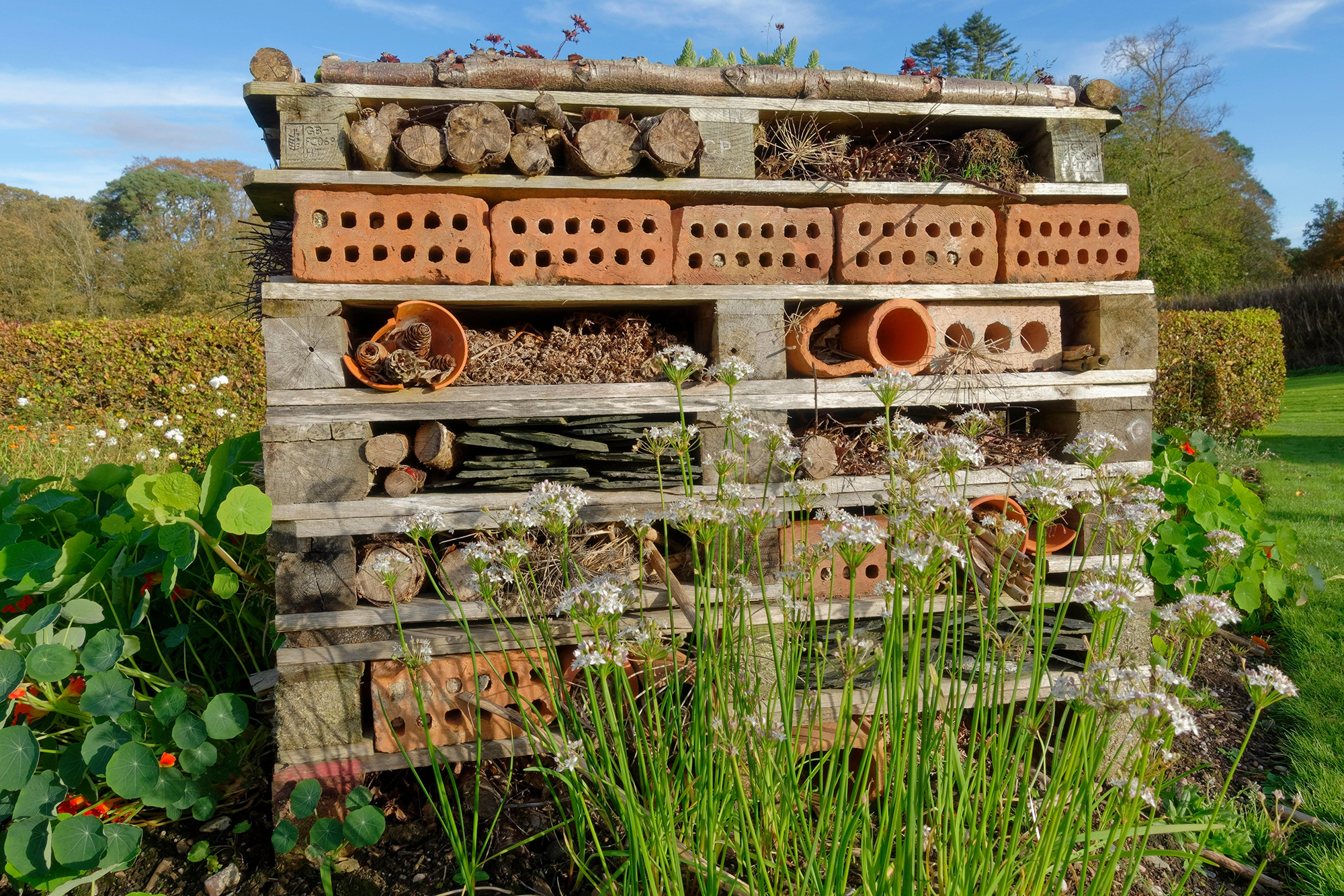

Knowing how to make a bug hotel is a valuable addition to the garden, encouraging and protecting a wide range of pollinators and other insects.
A popular addition to wildlife garden ideas, these bug hotels can be found ready made online, in supermarkets and garden centres. However, they are great to make at home too.
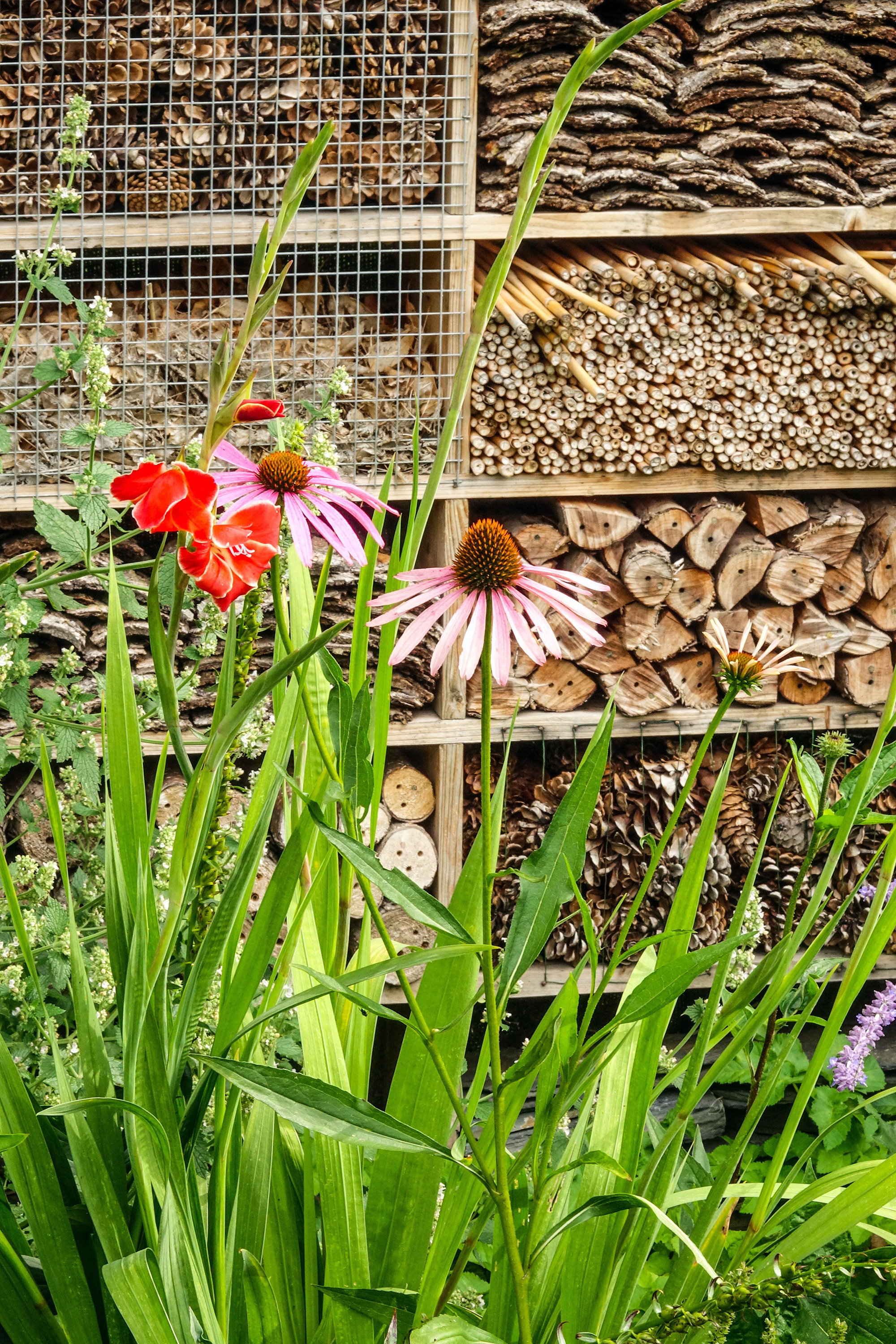
How to make a bug house: step by step guide
- Start by sourcing your materials – ensure that all the wood is natural and untreated. Even better is to source natural materials from your garden.
- Once you have your materials create a strong framework. 'Old wooden pallets are great as they have ready-made gaps and are sturdy. Place bricks on the ground as your foundation and then layer the wooden pallets on top (if you want to attract hedgehogs, make sure to leave enough space, or even put in your own hedgehog box),' recommends Anna Feeney from the RSPB.
- Alternatively, you can make you own framework out of untreated wood, these tend to be square in shape with a triangle section at the peak. Create individual sections will smaller pieces of wood. Regardless of the framework you choose, 'make sure it is no more than a metre high,' adds Anna.
- Fill in the gaps with natural materials. Anna advises using different materials as they will attract different species. She recommends:
- Dead wood and loose bark are great for beetles, centipedes, and spiders
- holes and small tubes made out of bamboo, reeds, and drilled logs are perfect for solitary bees.
- Dry leaves, sticks or straws for ladybirds.
- Lacewings thrive on corrugated cardboard.
- Avoid painting your bee hotel as this can act as a deterrent. Also make sure you do not use any insecticide in the vicinity of your bug hotel.
- Add a roof. It is important to ensure that your bug hotel will remain dry in damp conditions to prevent your bugs from being washed out of their new homes. 'Simply add some old roof tiles or plants covered with roofing felt to keep everything nice and dry. You can always try putting a bit of rubble or gritty soil on top and seeing if any wildflower seeds arrive and take root,' adds Anna.
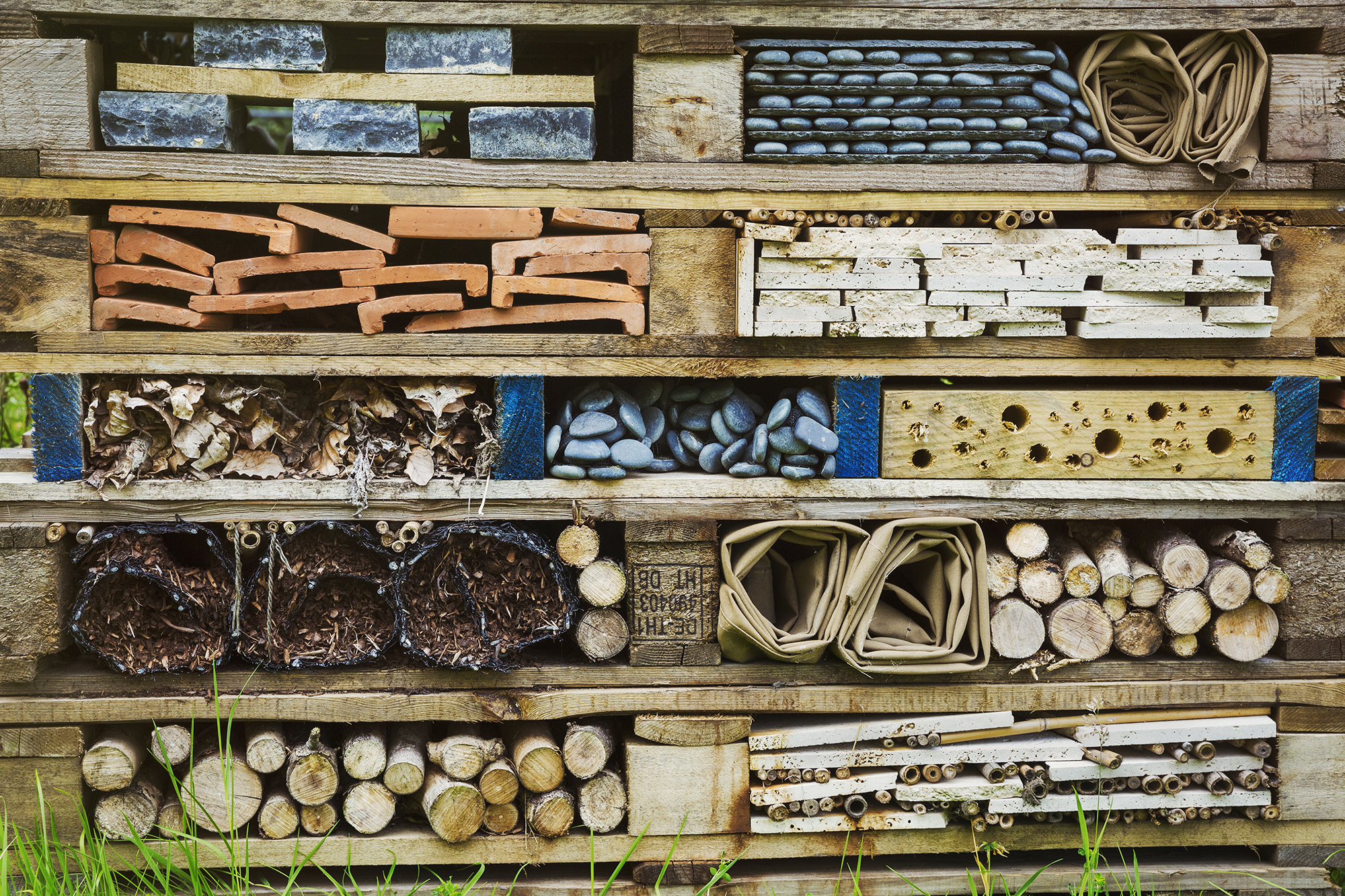
How to make a bug house: easy
If you have the space at the back of your garden, then you can learn how to make a bug house that is easier that the hotel-style design. The perfect addition to sustainable gardening ideas, this style is also likely to be more popular with insects who will naturally gravitate to familiar locations.
‘You can create a DIY bug hotel by using lots of material you might find in your garden. Simply collect anything from large sticks, wood or logs, dead leaves and old bricks and organise them into a small pile. Just ensure that there are lots of small spaces for creatures to crawl into and feel cosy,’ advises Sarah Hancocks, projects manager at Vivara.
These bug piles offer a relatively natural habitat for all manner of insects and you will quickly find your garden’s creepy crawlies making it their home.
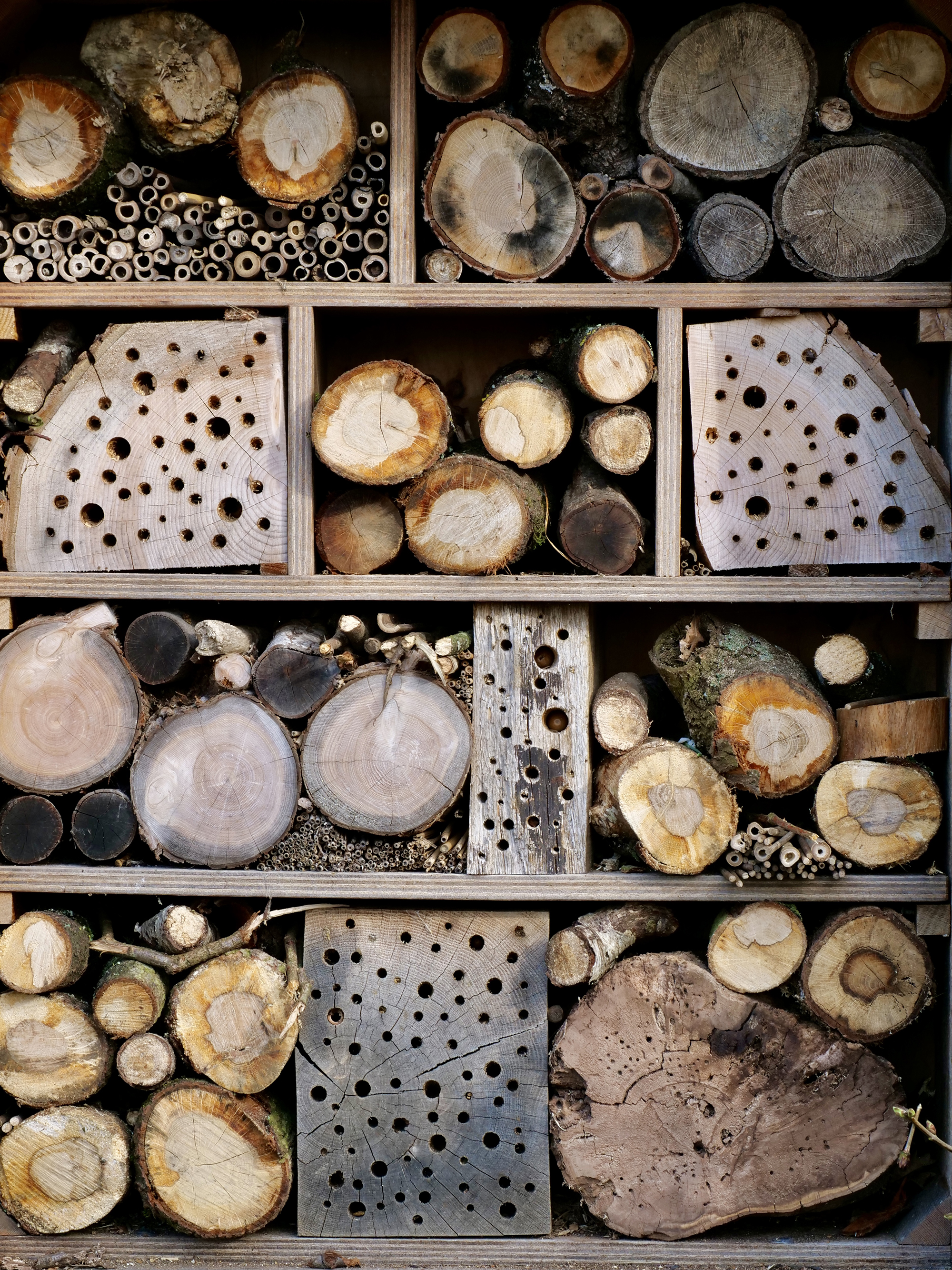
Should bug hotels be sun or shade?
Your bug hotel should be in shade, however, make sure that it is also a warm area of the garden – a quiet corner or near a brick wall are good options. ‘Site your bug hotel in a warm, dry and sheltered place in the garden away from prevailing winds and heavy downpours,' advises Sarah Hancocks.
Also ensure that it's a part of the garden that is not often disturbed – make sure that it's unlikely to get knocked by a stray ball or disrupted by your dog.
Add somewhere for bees to your bug hotel
All bug hotels tend to feature an area for bees, easily identifiable by a series of short bamboo poles all gathered together. These are highly successful and should definitely be incorporated into your garden.
‘A bee hotel is a little different from a bug hotel (though it can be incorporated into the design). I would keep the bee hotel fairly small in scale (as very large ones will attract more solitary bees but also more bee parasites into a concentrated area) and ensure it is positioned in a sunny spot. The hotel will want some sort of roof or covering at the top to protect the materials from getting all soggy,’ says Helen Bostock, Senior Wildlife Specialist at The Wildlife Trust.
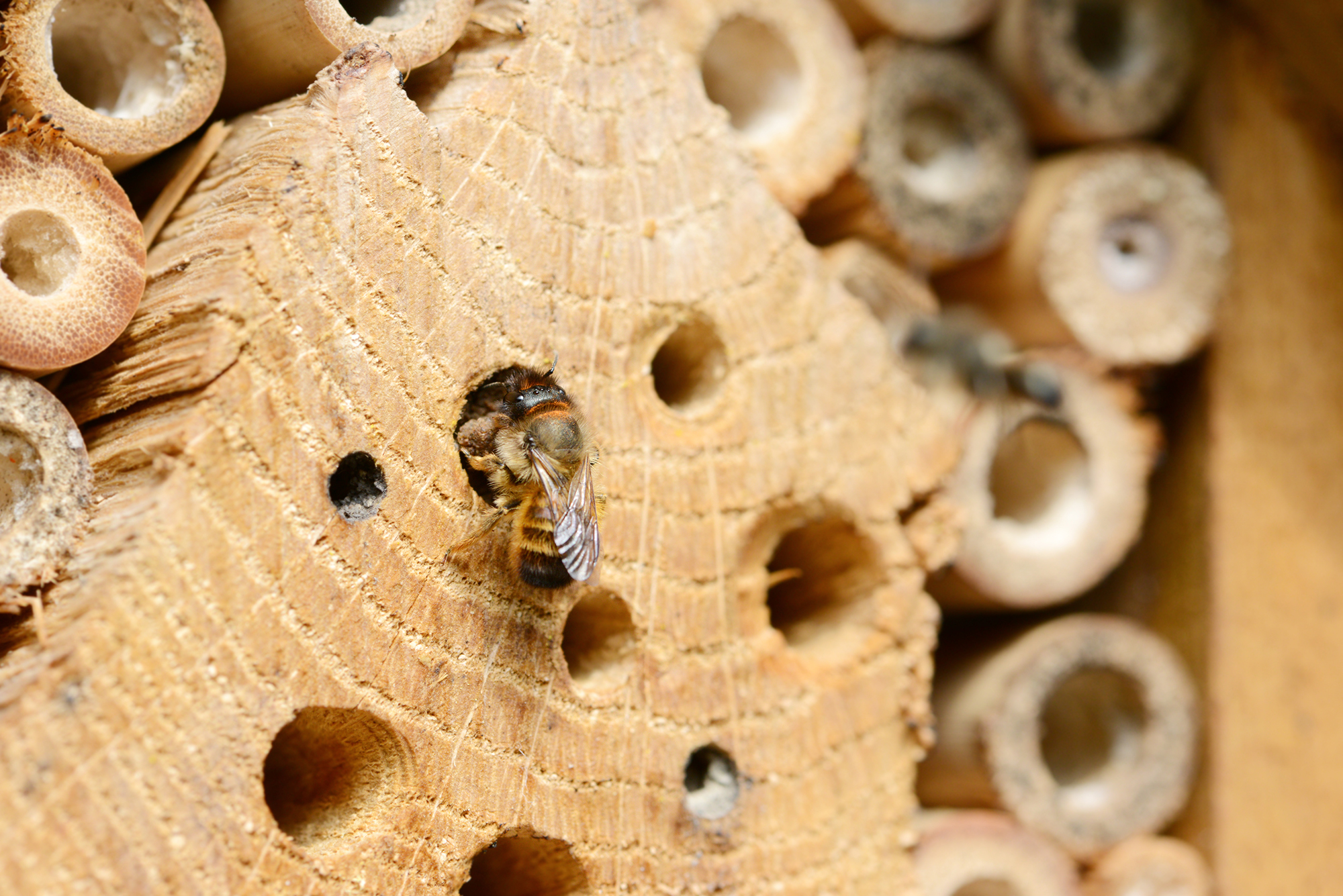
Why make a bug hotel
Pollinators are vital: from the benefits they bring to our environment's wellbeing through to their essential contribution to agriculture and food production. Despite their importance, however, the number of pollinators still continues to be in decline. One reason for this is loss of habitat. If you have a well established garden, you only need to turn over a stone or lift up a pot to find plenty of bugs. The aim of a bug hotel is to mimic this natural habitat.
'The effects of the bug hotel can go far beyond its doors – insects become invaluable food sources for birds, hedgehogs, and bats, pollinators help our plants to reproduce, and the burrowing invertebrates help keep our soils healthy,' adds Anna.
How do I attract bugs to my bug hotel?
You can attract bugs to your bug hotel by mimicking their natural habitats – ensure you include lots of twigs, small rocks and leaves. Also avoid over filling your bug hotel and ensure there's plenty of small crevices where the bugs can feel safe from predators.
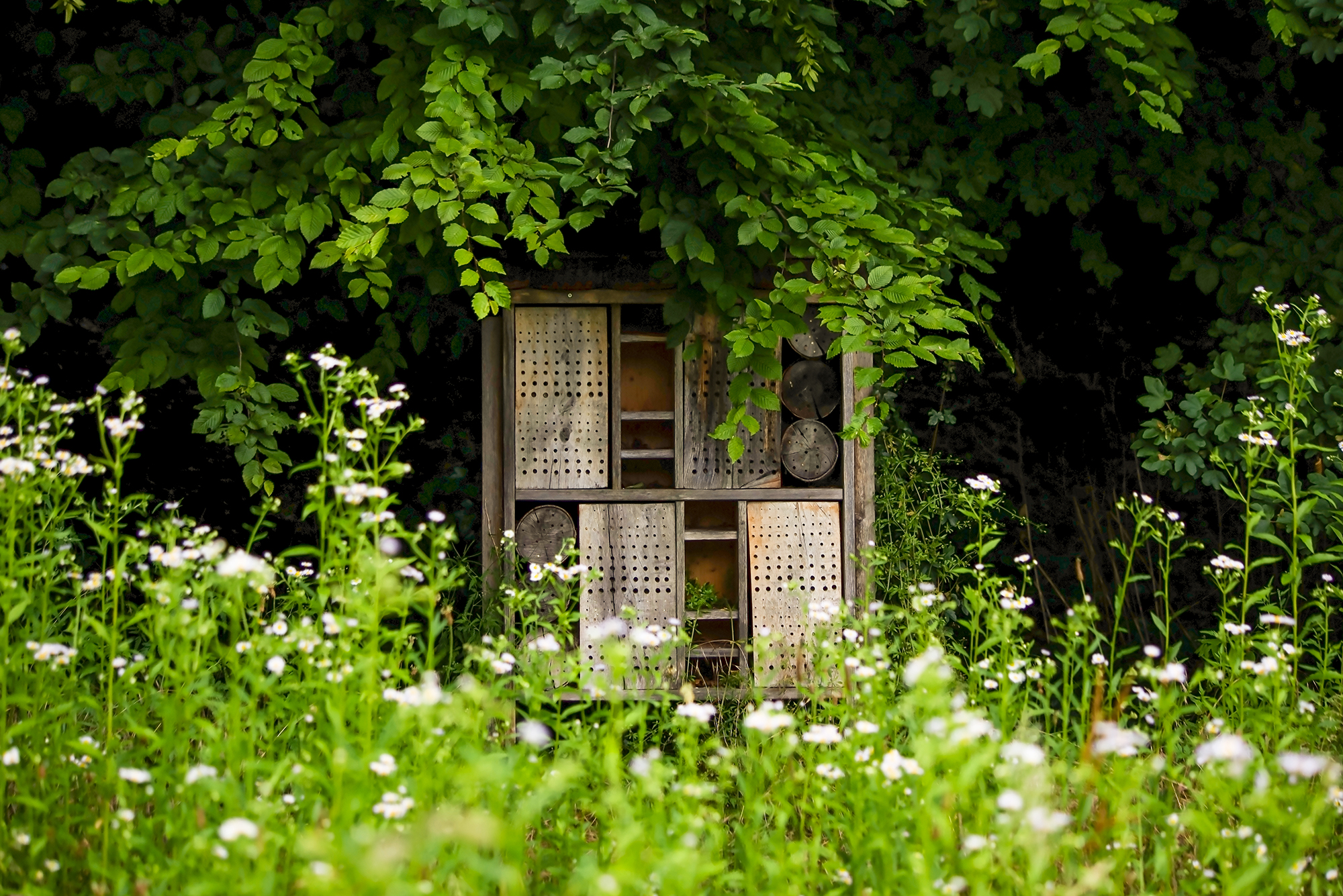
When to make a bug hotel?
Fall is the best time of year to make a bug hotel. 'You can make a bug hotel at any time of year, though autumn is a particularly good time as there are lots of natural materials around that you can use such as straw, dry grass, and hollow plant stems,' says Anna.
Do bug hotels actually work?
There is a mixed opinion on whether bug hotels actually work, though there is certainly no harm in adding one.
‘Though insects will naturally gravitate towards crevices and spots such as a garden shed, fence panels, dense climbers, stacks of plant pots over artificial boxes – bug hotels can still bring some benefit,’ says Helen Bostock.
‘Learning how to make a bug hotel is one of many fun backyard ideas for kids that are great for gardening with children. Using found or recycled materials and gets everyone thinking about how to welcome invertebrates into a garden and all the different roles they can play. They will also bring benefit to new gardens or those that lack suitable natural habitats, bug hotels will indeed provide shelter which will be lacking while a garden is very new,’ adds Helen.
Sign up to the Homes & Gardens newsletter
Design expertise in your inbox – from inspiring decorating ideas and beautiful celebrity homes to practical gardening advice and shopping round-ups.

Having graduated with a first class degree in English Literature, Holly started her career as a features writer and sub-editor at Period Living magazine, Homes & Gardens' sister title. Working on Period Living brought with it insight into the complexities of owning and caring for period homes, from interior decorating through to choosing the right windows and the challenges of extending. This has led to a passion for traditional interiors, particularly the country-look. Writing for the Homes & Gardens website as a content editor, alongside regular features for Period Living and Country Homes & Interiors magazines, has enabled her to broaden her writing to incorporate her interests in gardening, wildlife and nature.
-
 Plants never to grow next to fruit trees
Plants never to grow next to fruit treesExpert advice on which plants to keep away from fruit trees to encourage a healthy harvest
By Jacky Parker Published
-
 Martha Stewart's tips for arranging daffodils are unbelievably simple and effective – it's the only flower advice you need this springtime
Martha Stewart's tips for arranging daffodils are unbelievably simple and effective – it's the only flower advice you need this springtimeMartha shows us that we can create gorgeous bouquets of this seasonal flower by simply trimming the stems and placing them in specific vases
By Hannah Ziegler Published
-
 Water garden ideas – 9 ways to introduce soothing water to your outdoor space
Water garden ideas – 9 ways to introduce soothing water to your outdoor spaceFrom cascading fountains to wildlife ponds, there are plenty of ways to create a tranquil water garden
By Leigh Clapp Published
-
 How to grow poppies
How to grow poppiesFind out how to grow poppies to enjoy the beauty of these brightly colored tissue paper-like blooms
By Leigh Clapp Published
-
 How to grow delphiniums from seed
How to grow delphiniums from seedFind out how to grow delphiniums from seed and enjoy these colorful cottage garden favorites filling beds and borders
By Leigh Clapp Published
-
 How to grow ferns – when and how to plant and care for them
How to grow ferns – when and how to plant and care for themLearn how to grow ferns to enjoy the texture and form of these versatile plants in many areas of your garden
By Leigh Clapp Published
-
 How to grow sweet peas from seed – in borders and pots
How to grow sweet peas from seed – in borders and potsFind out how to grow sweet peas and where to enjoy their wonderful color, ruffled blooms and sweet fragrance in your garden
By Pippa Blenkinsop Published
-
 How to make fat balls for birds – easy steps feed our feathered friends
How to make fat balls for birds – easy steps feed our feathered friendsLearn how to make fat balls for birds to ensure their wellbeing throughout the winter
By Holly Reaney Published
-
 Planning a kitchen garden – from layouts to picking the best crops
Planning a kitchen garden – from layouts to picking the best cropsPlanning a kitchen garden is easy with this expert advice – whether yours is in beds, borders or a dedicated patch – you're guaranteed success
By Leigh Clapp Published
-
 How to grow cosmos – expert tips on when and where to plant these flowers
How to grow cosmos – expert tips on when and where to plant these flowersLearn how to grow cosmos to add bright color in your garden from summer through to fall with their beautiful blooms
By Leigh Clapp Published